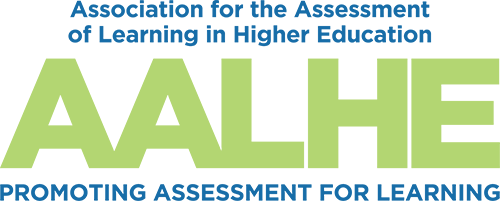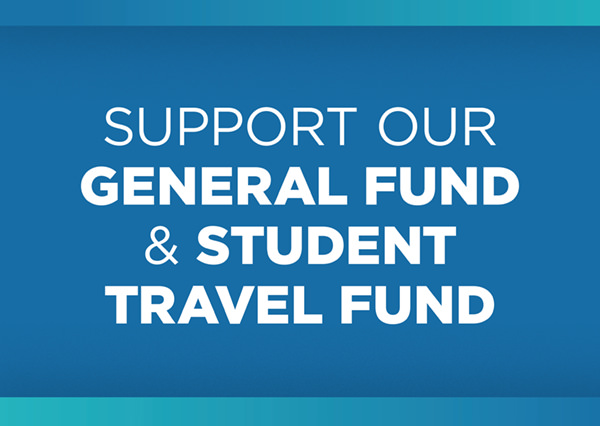- Home
- About AALHE
- Board of Directors
- Committees
- Guiding Documents
- Legal Information
- Organizational Chart
- Our Institutional Partners
- Membership Benefits
- Member Spotlight
- Contact Us
- Member Home
- Symposium
- Annual Conference
- Resources
- Publications
- Donate
EMERGING DIALOGUES IN ASSESSMENTRemaining Professionally Active in Retirement March 12, 2025
Abstract Many assessment professionals contemplate ways to effectively transition into a new phase of professional identity and engagement during retirement. The authors share approaches, experiences, and surprises people may encounter during their transition to retirement. The article provides practical ideas for addressing the personal, professional, and financial dimensions people need to navigate as they map their own paths into retirement. Remaining Professionally Active in Retirement For many academics, the prospect of retirement elicits mixed emotions (Elue & Simula, 2023). On the one hand, people look forward to a retired life that is free of deadlines and schedules controlled by the demands of the academic calendar and, instead, presents opportunities for travel and leisure activities. At the same time, academic identities are often closely aligned with professional activities such as teaching and scholarship. For some, a satisfying transition to retirement consists of a shift to a more leisurely connection to professional activities rather than a complete break. These individuals want to maintain intellectual stimulation and social interactions by continuing (while reducing) professional activity, either through consultation work or through ongoing research and scholarship. No matter the route that brought us to the assessment profession (which could be another article in itself!), most of us were drawn by our interest in, and talent for, making connections: connecting colleagues with resources and other colleagues across the institution; connecting findings from data with strategies for improvement; and connecting theory with practice and ideas with implementation (Ariovich et al., 2019; Clucas Leaderman & Polychronopoulos, 2019; Horst & Prendergast, 2020; Jankowski & Slotnick, 2015; Morrow et al., 2022). After the initial “honeymoon phase” of retirement (sleeping in, long-awaited leisure reading, travel), do we begin to feel lonely because of the reduced interpersonal engagement associated with our personal and professional identities? As we contemplate the end of a full-time, campus-based career, how do we maintain the connections we value and create new ones for the next phase of our personal and professional lives? Factors to Consider When Timing Retirement As individuals think about retirement, they need to consider the question of when to retire as well as what they want to do during retirement. Timing retirement, especially for those who are not required to retire at a specific age, can be a tricky business. For those who love their professional work and whose personal identity is strongly connected to their professional life, the decision to break from that life can be daunting (Elue & Simula, 2023). There are attractions to delay: continuing to earn income and save for retirement; enjoying the benefits of social interactions with work colleagues and, perhaps, even the structure of work life. There are risks associated with delaying too long: sudden changes in health might undermine our fantasy plans for retirement. There is also value in retiring when you are functioning near the top of your game. It is good to be missed a bit. Many of us have witnessed colleagues who outstayed their effectiveness or ability to influence policy and practice. We have learned that few activities go exactly as planned, so planning to be flexible can help to manage the unexpected. Some post-retirement activities require pre-planning to establish contacts and activities while we are still employed. Staying Connected in Retirement There are a variety of ways to stay connected to the profession and to colleagues through consulting work, both for compensation and pro bono. Accreditation Peer Review The easiest pathway into paid consulting work (discussed further in the next section) is through accreditation. While still employed full-time at a higher education institution, take every opportunity to participate as a peer reviewer for your institution’s accreditor(s). This will help to expand your network and document your credentials for future contract work. Often when institutions are gearing up for reaffirmation, they look to consultants to help with this process. Increasingly, these consultations include universities outside the United States that seek U.S. accreditation to attract and retain students who might not fit the mold of their home country’s educational system. If compensation is not paramount, many accrediting bodies afford opportunities for retirees to remain active as peer reviewers. Site visits are a great retirement activity because they are short-term engagements: they allow you to visit a new place, feel the energy of campus life, connect with colleagues, and then go home after three days. Although largely pro bono, hosting institutions reimburse costs and sometimes provide a token honorarium. Service to the Profession Another way to maintain connection is through service to the profession, such as volunteering for a regional or national assessment organization like AALHE, hosting webinars, or facilitating workshops and trainings for emerging assessment professionals. Your influence on the next generation of assessment professionals leaves a rewarding legacy to benefit students and faculty for years to come. Paid Consulting Grant writing and evaluation may also provide lucrative consulting opportunities. Indeed, there are professional evaluators who make a solid living as full-time federal grant evaluators. As a retirement gig, one or two contracts per year may provide a nice income supplement with minimal time commitment and maximum scheduling flexibility, generally a few days of effort at the beginning and end of each semester, and a 1-2 page annual report. Note: AALHE members may wish to access the November 2019 webinar, “Bringing Assessment Expertise to Grant Evaluation” in the Webinar Library. Volunteer Opportunities Community service may be an attractive option if financial compensation is not your highest priority. No matter where you live, there are small non-profit organizations that can benefit from a solid evaluation plan to improve service delivery and compete for grant funding, providing an opportunity to use your skills and experience. Like accreditation site visits, this work is usually pro bono. For example, the Atlanta Area Evaluation Association has an organized Pro Bono Evaluation Support Project that matches volunteers with local non-profits; other umbrella organizations, such as the United Way, may have similar endeavors. Additionally, you can always connect directly with organizations to support their assessment-related goals. Of course, there are many volunteer opportunities unrelated to assessment practice that you may wish to pursue as a means to broaden your horizons, meet new people, and serve your local community. Remaining Active as a Scholar Opportunities to remain active as a scholar are often embedded in pre-retirement activities. If you currently serve on the editorial board of an academic journal (as an editor or consulting/associate editor) or serve as a regular ad hoc reviewer, those commitments can extend into retirement. You can also review proposal submissions as part of a conference planning committee. Similarly, continuity for scholarship may simply be a matter of continuing existing commitments (e.g., completing a project funded by a research grant, collaborating and co-authoring a journal submission based on ongoing pre-retirement work). As time passes, connecting with collaborators who are not retired may create opportunities for additional scholarly work. All of these service options will keep you current on trends and emerging research in assessment. One advantage of maintaining scholarly engagement is that it is fairly easy to create flexibility and control the time demands of this work. It is just a matter of saying no to requests that are timed badly or that don’t interest you. Although reviewing is a solitary activity, serving on a conference planning committee involves regular virtual meetings with committee members. This activity has less flexibility, but it does provide meaningful connections and social interactions. Mentorship Another professional activity with a strong social component is mentorship. Maintaining connections and offering your wisdom and encouragement to junior colleagues could certainly continue into retirement. In some cases, mentoring activities are associated with ongoing scholarly collaborations, but they could also include guidance around teaching or other aspects of academic life. Advice for Pre-retirees: Preparing for Active Professional Engagement During Retirement Reflect on what you enjoy most about your current professional life. Most post-retirement activities are continuations of ongoing pre-retirement activities such as consultations, scholarships, engagement with professional organizations, or mentoring junior colleagues. Thus, you may only need to maintain an existing activity after formal separation from employment, rather than establishing a new activity. In whatever way you wish to stay connected to the profession, it is never too soon to begin laying the groundwork while you are still employed. Take the Marie Kondo approach to retirement: Think about the parts of your job that bring you joy and look for avenues to continue those activities into retirement. As for the parts of your job that you find tedious or draining, leave them without a backward glance (American Psychological Association, 2024)! To begin preparing for a professionally active retirement, start with these simple activities:
We hope these suggestions help you think clearly about your future life in retirement. Perhaps you have additional strategies and ideas for your retirement. As recent retirees (plus one who is planning far ahead), we are happy to welcome you to join us – the water is fine!
References American Psychological Association (2024, January). Higher education is struggling: Psychologists are navigating its uncertain future. Monitor on Psychology, 55(1), p. 48 (print version). https://www.apa.org/monitor/2024/01/trends-higher-education-challenges Ariovich, L., Bral, C., Gregg, P., Gulliford, M., & Morrow, J. A. (2019). The assessment profession in higher education: A snapshot of perceptions, roles, and activities. Assessment Update, 31(3), 10-12. https://doi.org/10.1002/au.30175 Clucas Leaderman, E. & Polychronopoulos, G. B. (2019). Strengths-based assessment practice: Constructing our professional identities through reflection. National Institute for Learning Outcomes Assessment. https://www.learningoutcomesassessment.org/wp-content/uploads/2019/08/Viewpoints-Polychronopoulos-Leaderman.pdf Elue, C. & Simula, B. L. (2023, November 20). Navigating grief in career transitions out of higher education. Inside Higher Education. https://www.insidehighered.com/opinion/blogs/university-venus/2023/11/20/navigating-grief-career-transitions-out-higher-education Horst, S. J. & Prendergast, C. O. (2020). The assessment skills framework: A taxonomy of assessment knowledge, skills and attitudes. Research & Practice in Assessment, 15, 1-25. Jankowski, N. A., & Slotnick, R. C. (2015). The five essential roles of assessment practitioners. Journal of Assessment and Institutional Effectiveness, 5(1), 78-100. https://doi.org/10.5325/jasseinsteffe.5.1.0078 Morrow, J. A., Polychronopoulos, G. B., Clucas Leaderman, E., & Christen, R. N. (2022). A snapshot of needed skills and dispositions through the lens of assessment professionals in higher education: Findings from a national survey. Research and Practice in Assessment, 17(2), 19-39. |

